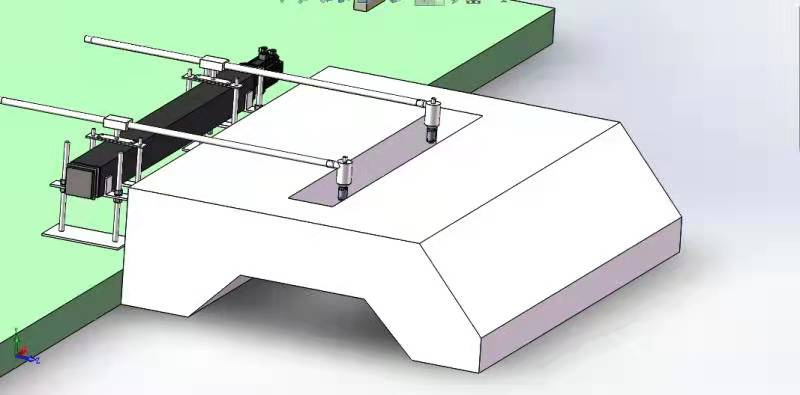PRODUCTS
Products
Slab transverse shift coordinate type slag adding system
Classification:
Key words:
System Introduction
In order to improve the process level and work efficiency of the crystallizer slag, and to meet the automatic slag addition requirements of the square billet, rectangular billet, round billet and slab continuous casting process, our company has developed an intelligent control system for the automatic slag addition of the crystallizer. The system replaces the manual slag adding process, which can reduce the labor intensity and labor cost. According to the requirements of billet casting process and billet drawing speed, appropriate amount of protective slag is automatically added to the crystallizer, which effectively solves the problem of unequal primary slag quantity and secondary slag quantity, avoids the billet surface defects caused by the mismatch of slag adding time effect and other factors, thus improving the automatic control level of continuous casting and improving the billet quality and product qualification rate.
Technical performance and system indicators
Slab transverse shift coordinate type slag adding system
| Requirements for adding slag: continuous/high frequency |
Quantity of slag added: automatic adjustment of pulling speed |
| System process: add less, add frequently, add evenly |
Maximum slag adding capacity of the system: 40 kg/h |
| Slag adding performance: uniform, with no dead angle covered by section |
Slag type: granular slag, hollow slag, powder slag |
| Features: simple equipment operation, easy maintenance |
Horizontal conveying: 15m |
| Control mode: each flow is controlled separately without affecting each other |
Hopper with lack of material alarm function |
| When the cross section changes, the control blanking device can work independently. |
The opening and closing mobile nozzle is fully adapted to the change of the end face of the cast slab. |

Previous Page
Next Page
Your suggestion is our driving force
Related Products
The transformer dynamic load intelligent management system is used to solve the problems of low operating efficiency of large transformers, difficulty in internal temperature monitoring, and limited operation of transformers under heavy (over) load, and to improve the operating efficiency of transformers without affecting the service life and safe operation of transformers.
The dynamic load management system of transmission line is used to solve the problems such as limited load capacity of transmission line and difficult to meet the demand of load growth, and to improve the operation level and load capacity of the line without changing the existing network structure and without affecting the thermal stability of the line.
Due to the technical limitations of the traditional transmission line fault location device, it is difficult to quickly and accurately locate the fault point and identify the fault type when the fault of the transmission line occurs in the complex operating environment (lightning strike, mountain fire, wind deviation, tree barrier, floating object, etc.). The distributed fault diagnosis device for transmission lines is based on fault local recording technology and traveling wave location method, which can effectively solve the problems of low positioning accuracy and difficult identification of fault types of traditional fault location devices.

